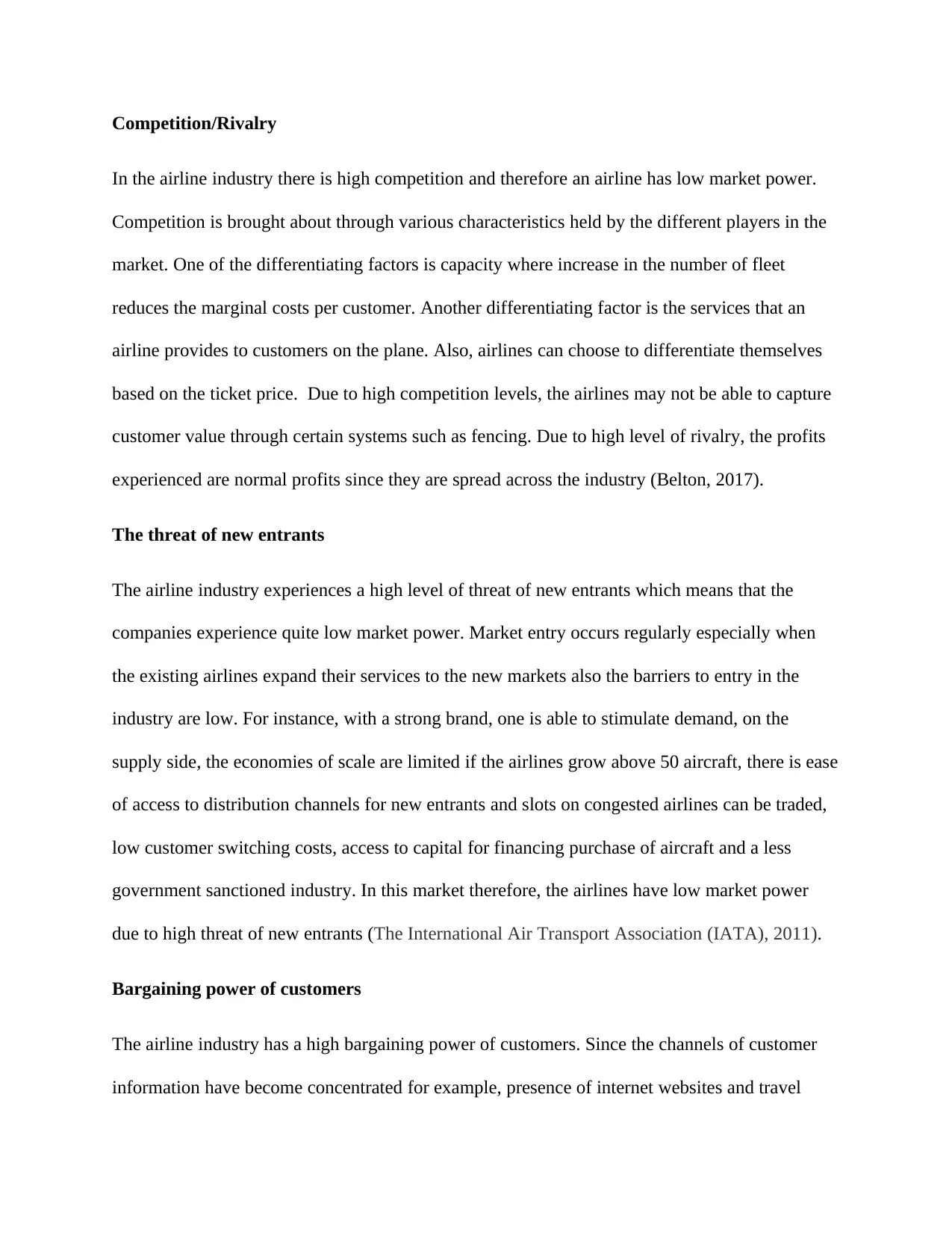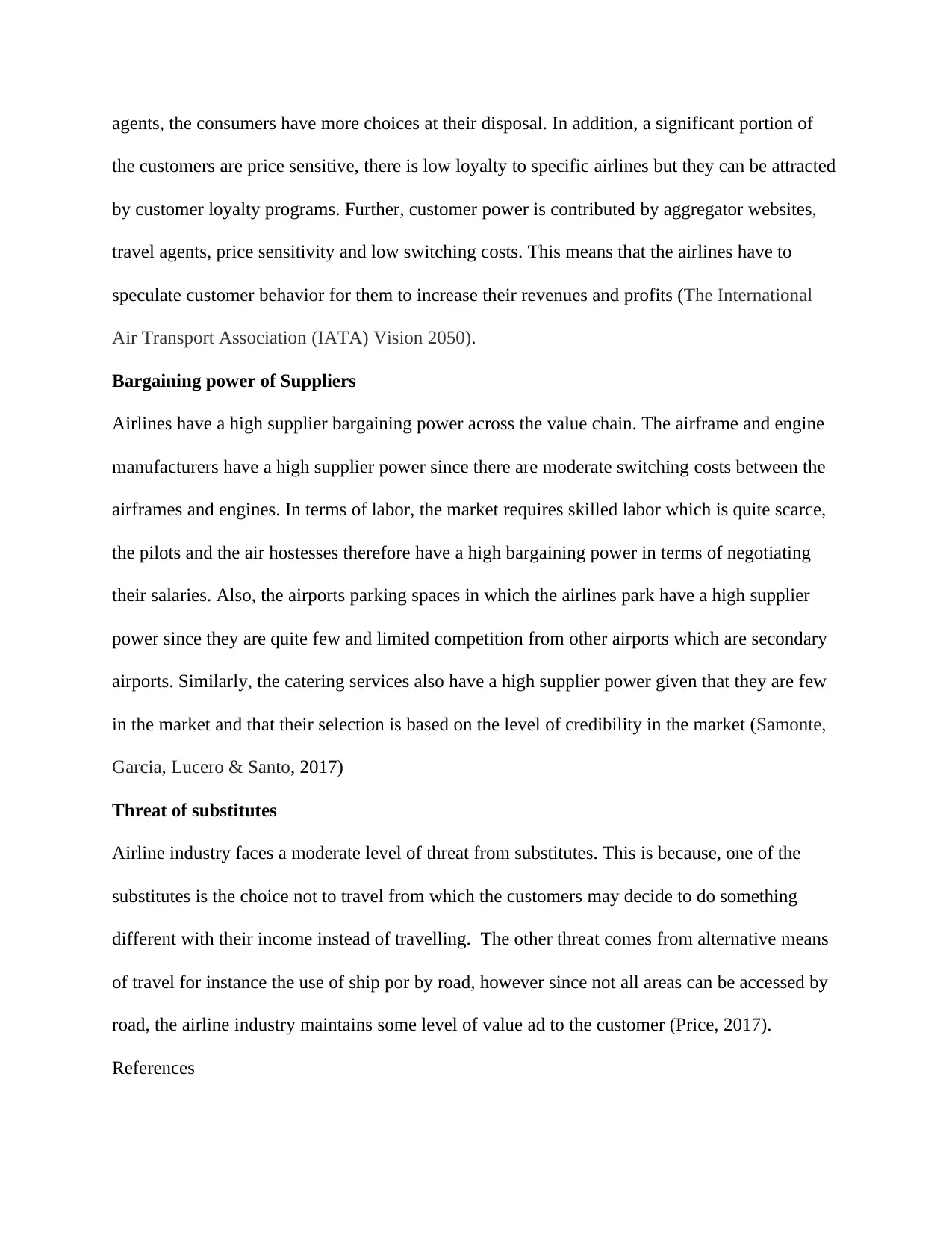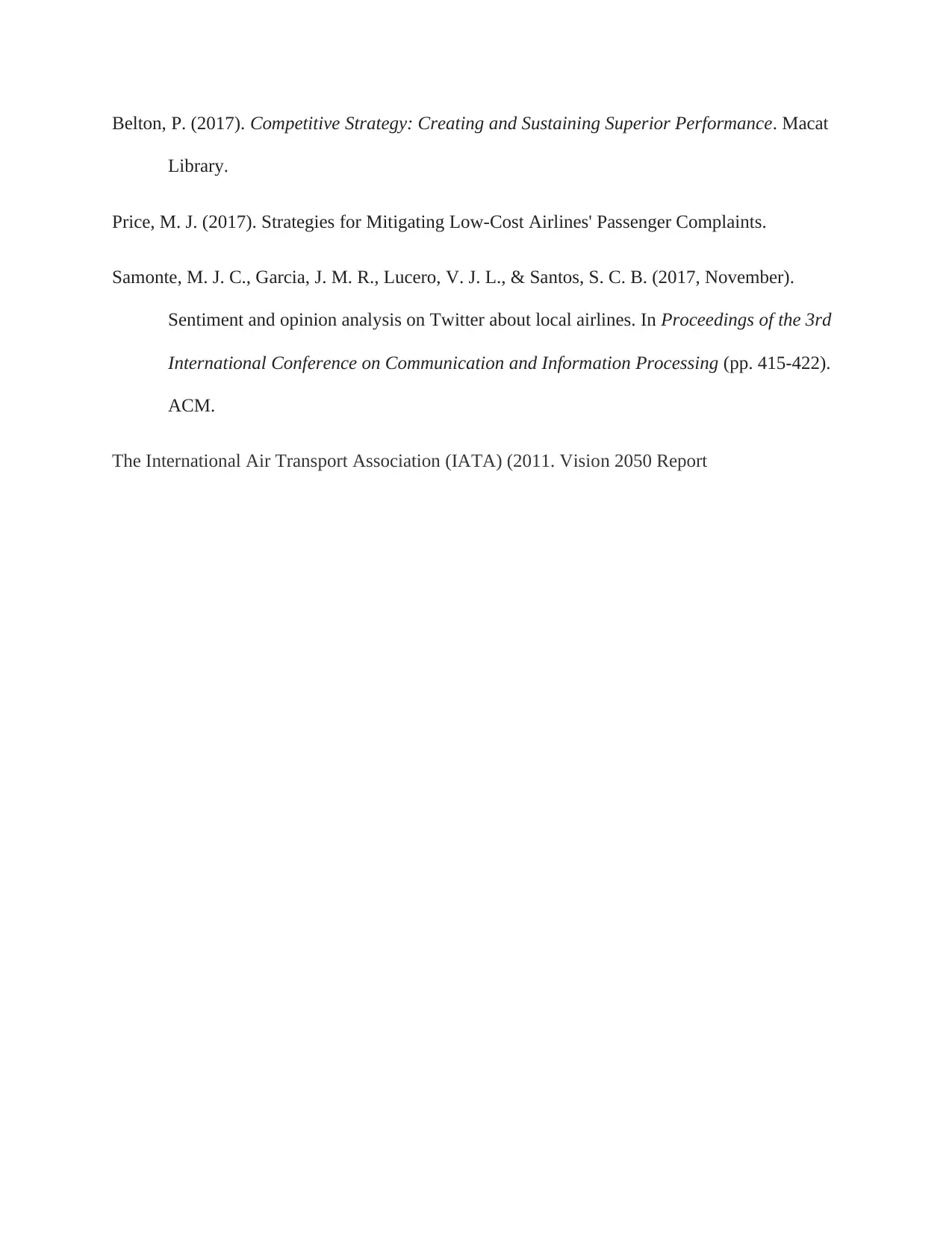Competition and Market Power Analysis in the Airline Industry
VerifiedAdded on 2021/09/15
|3
|773
|108
Report
AI Summary
This report provides an analysis of competition and market power within the airline industry. The analysis covers key aspects such as competition and rivalry, the threat of new entrants, the bargaining power of customers, the bargaining power of suppliers, and the threat of substitutes. The airline industry is characterized by high competition, leading to low market power for individual airlines. Factors like capacity, service differentiation, and pricing contribute to this competition. The threat of new entrants is high due to low barriers to entry, while customers hold significant bargaining power due to information access and price sensitivity. Suppliers, including airframe manufacturers, labor, and airports, also wield considerable power. Finally, the report considers the moderate threat posed by substitutes, such as alternative travel methods and the option of not traveling at all. The report references several sources to support its findings.
1 out of 3









![[object Object]](/_next/static/media/star-bottom.7253800d.svg)